Below is a viewpoint from Chapter 4 of the Foresight Africa 2018 report, which explores six overarching themes that provide opportunities for Africa to overcome its obstacles and spur inclusive growth. Read the full chapter on African structural transformation here.
Many experts are lamenting the fate of advanced economies, still at risk of secular stagnation—a prolonged period of insufficient growth that can only be addressed by unconventional monetary policy and unsustainable financial conditions. In fact, the main problem that has plagued the global economy for much of the past decade is inadequate aggregate demand due to deflated balance sheets of households; constrained fiscal options in high-income countries where there seems to be a fiscal stimulus “fatigue” and an obsessive focus on public debt; and exhaustion of the uses of monetary policy, especially when the financial sector lacks the incentives and effective tools to fund medium- and long-term profitable investment. These suboptimal macroeconomic conditions are compounded by the perpetuation of inequality within nations—especially with respect to access to the job market, to education, and to capital. All these obstacles are fueling anger, resurgent populism, despair, and helplessness in many social groups.
Fortunately, the resilience of some emerging economies has kept global growth afloat. Last year they accounted for nearly 75 percent of global growth (China’s annual growth average of 9.6 percent for the past 38 years is something that will be studied in economic history books for centuries to come). But as they approach the technology frontier, they too are facing the risk of lower potential output due to population aging and lower total factor productivity growth. African economies have substantially improved their general macroeconomic conditions and performance but are still trapped in the trade of unprocessed commodities whose prices declined sharply in 2014. Despite a remarkable performance (last year, 13 African countries grew above 5 percent and 17 grew between 3 and 5 percent), the continent is not creating enough wealth and jobs to help reduce poverty and mitigate the risks of conflicts and disorderly migrations.
African economies have substantially improved their general macroeconomic conditions and performance but are still trapped in the trade of unprocessed commodities whose prices declined sharply in 2014.
Under such circumstances, a straightforward solution to the problem of global growth would be for rich economies to devote a small fraction of their poorly used financial resources to finance infrastructure in developing countries where profitable investment opportunities and business ventures abound. African industrialization is indeed the most reliable driver for global prosperity and peace for decades to come. It would spur economic development on the continent, provide the much needed boost to aggregate demand, and lift global growth while generating new employment opportunities in advanced and developing economies.
African industrialization should not be financed through old forms of foreign aid with miserabilist connotation but through a series of new global pacts combining substantial amounts of public and private money in search of good returns (including pension funds and sovereign wealth funds). This would require accommodative monetary policy and fiscal stimuli that are wasted in rich countries be channeled into profitable infrastructure projects that abound in developing countries. Instead of trying to fill large infrastructure deficits indiscriminately around the world, multilateral development banks could help build a series of well-targeted industrial parks and quality infrastructure in developing countries, and provide advice and training on product quality standards to make non-tariff measures ineffective. Everybody would win. And the world would be a much safer, happier place.
The Brookings Institution is committed to quality, independence, and impact.
We are supported by a diverse array of funders. In line with our values and policies, each Brookings publication represents the sole views of its author(s).

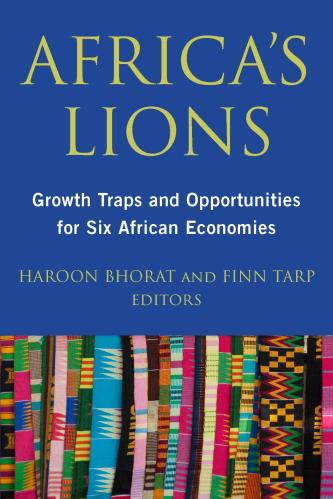
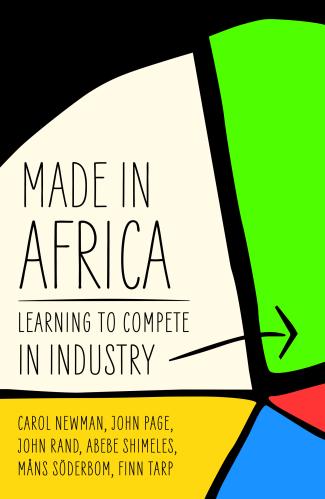
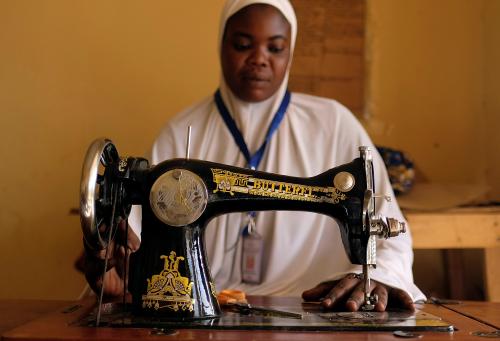
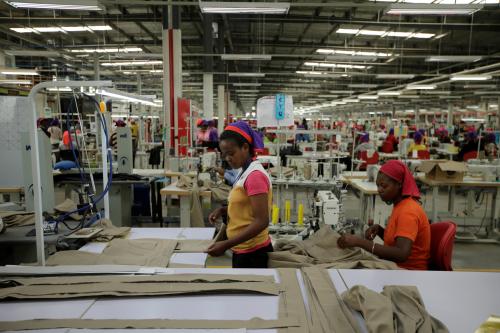
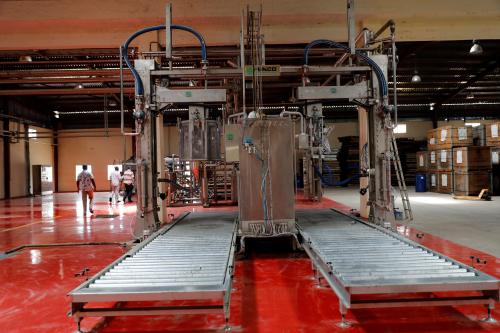




Commentary
Foresight Africa viewpoint – The global dividends of Africa’s industrialization
January 24, 2018